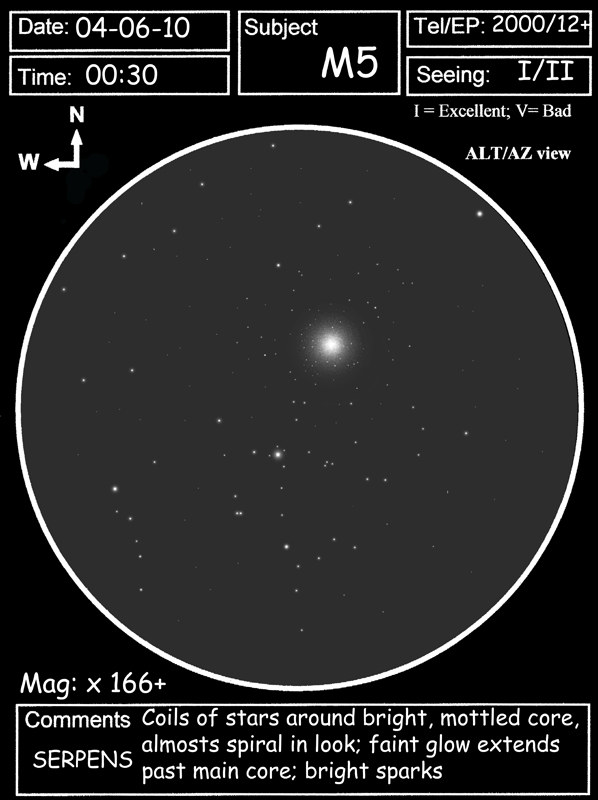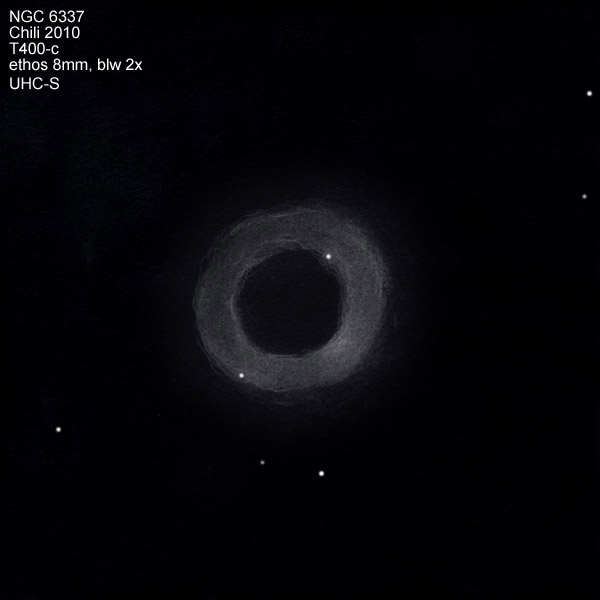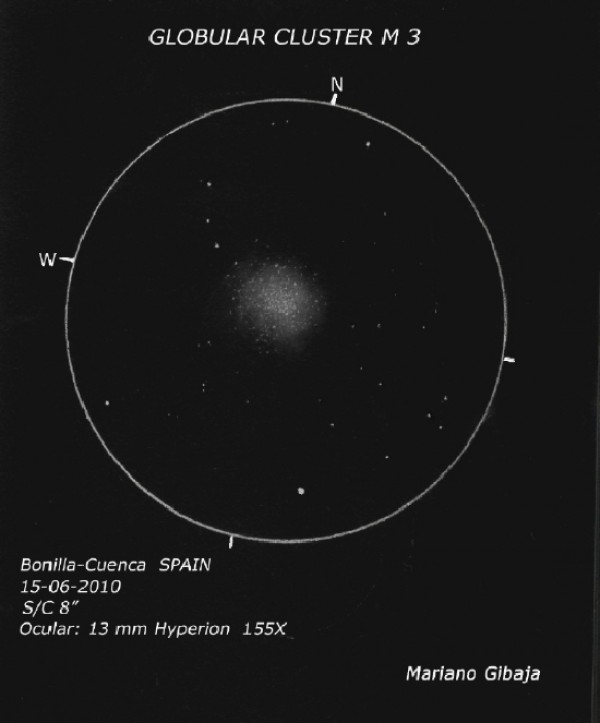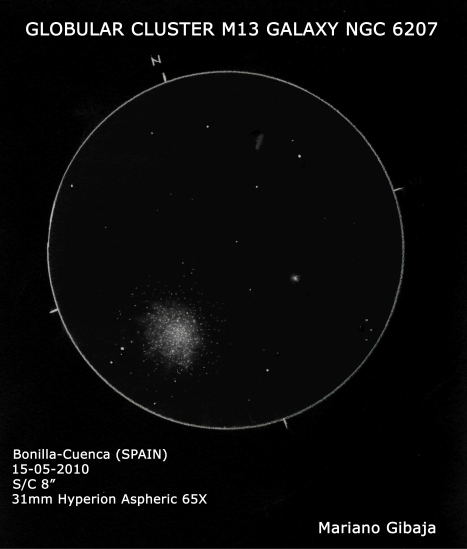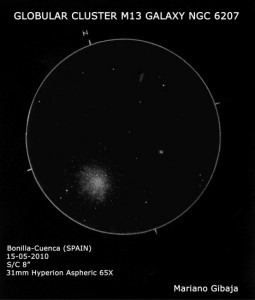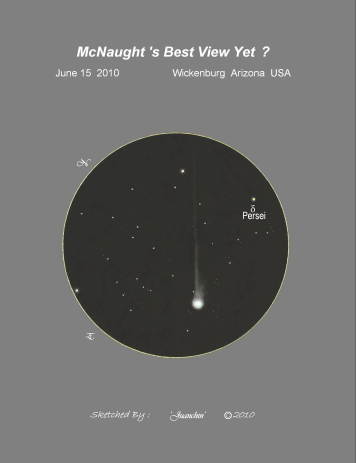
Subject: ASOD: McNaught’s Best View Yet ? – ” Juanchin ”
Object : Comet C/2009 R1 McNaught
Date : June 15, 2010
Time : 03:00 LST / 10:00 UT
Location : Wickenburg Arizona USA
Instrument : Orion 25 x 100 FOV 2.5 Deg.
Magnitude : ~ 6.5
Weather : Dark and clear sky, slightly gusty winds, cool upper 70’s
with a chance of Sagittarids! : )
Comments :
A major prediction for this comet was that perhaps being a first
timer to swing around our Sun, it might have a dramatic outburst
display like that of Comet Holmes.
Last week of June the 9th, I sketched McNaught while it passed by
M34, but the Moon was the factor that was robbing me of some extra
details. Details that tonight
were more noticeable. The ionic tail is longer, I’d say at least
over 1.5 Degrees. A fine thin tail stretching subtlely into a North-
Northwest direction. Also, what I believed was
the dust tail, a spur emanating from the coma and shooting towards
the West was visible. It kind of pointed towards the bright yellow
star of Delta Persei.
The coma itself showed its greenish tint along with a very bright
white core. I’m not very precise on determining the size of the
coma but I’d say it was in the vicinity of 10 arcminutes.(Someone
can help me here, will appreciate) ; ) I noticed the comet had
shifted during the course of about 1 hour. A star North of the
comet and grazing the tail was now on the the Southwest side and
embedded close to the dust tail. By a wild guess again, this comet
had traveled almost its own coma diameter in that 1 hour time lapse.
This will be my last chase for comet McNaught, twilight starts
creeping very fast soon after 11:00 UT. It hinders any chance to
see the comet rise higher and the dawn light starts washing
everything away. As the days progress the comet will be lower and
lower into the horizon and finally out of sight. I enjoyed every
bit of observation and I hope there are more of you out there who
did the same and sketched it.
Wishing all clear and dark skies,
Juanchin
P.S. I only saw about 3 Sagittarids that night, very bright with
